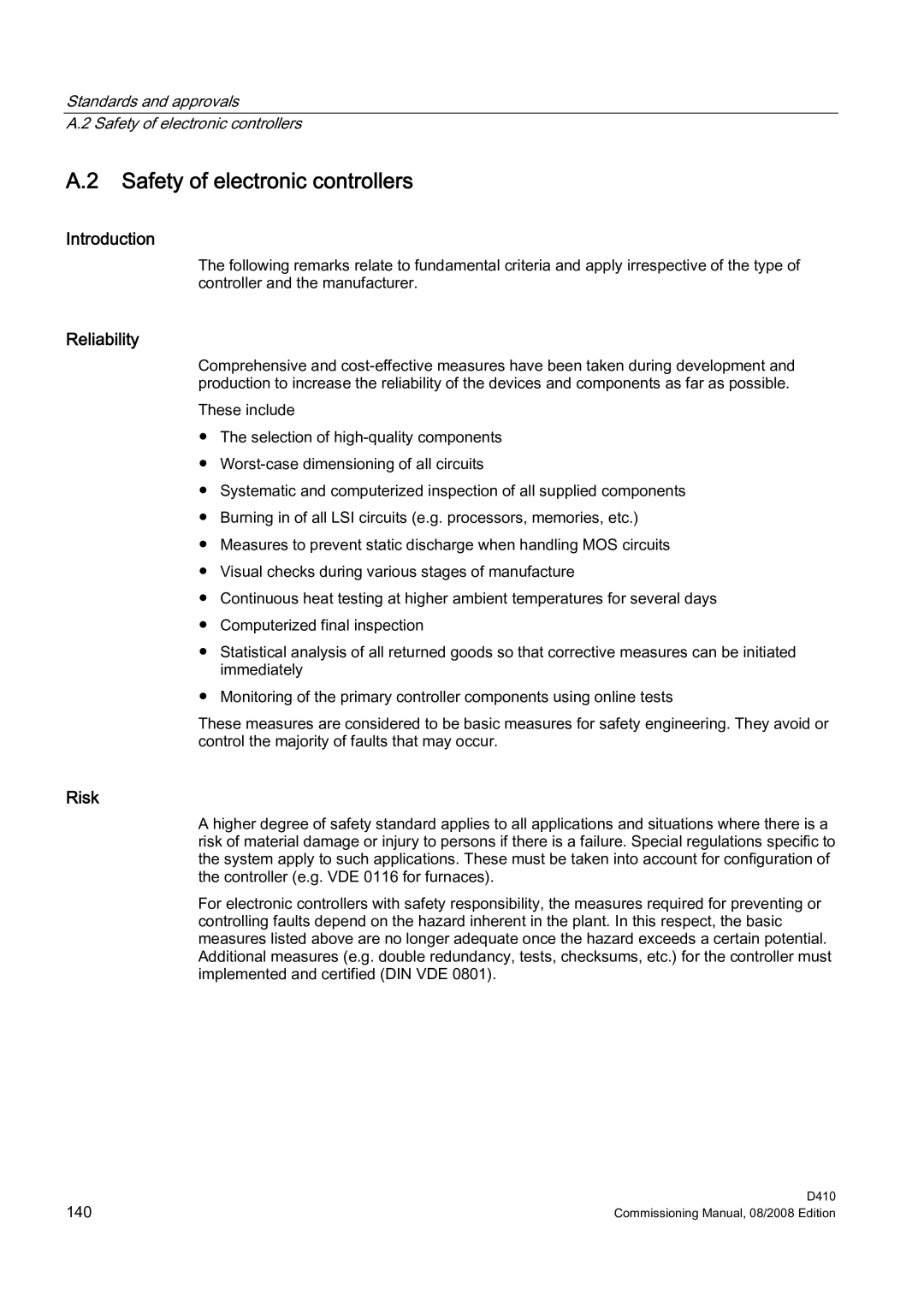Standards and approvals
A.2 Safety of electronic controllers
A.2 Safety of electronic controllers
Introduction
The following remarks relate to fundamental criteria and apply irrespective of the type of controller and the manufacturer.
Reliability
Comprehensive and
These include
●The selection of
●
●Systematic and computerized inspection of all supplied components
●Burning in of all LSI circuits (e.g. processors, memories, etc.)
●Measures to prevent static discharge when handling MOS circuits
●Visual checks during various stages of manufacture
●Continuous heat testing at higher ambient temperatures for several days
●Computerized final inspection
●Statistical analysis of all returned goods so that corrective measures can be initiated immediately
●Monitoring of the primary controller components using online tests
These measures are considered to be basic measures for safety engineering. They avoid or control the majority of faults that may occur.
Risk
A higher degree of safety standard applies to all applications and situations where there is a risk of material damage or injury to persons if there is a failure. Special regulations specific to the system apply to such applications. These must be taken into account for configuration of the controller (e.g. VDE 0116 for furnaces).
For electronic controllers with safety responsibility, the measures required for preventing or controlling faults depend on the hazard inherent in the plant. In this respect, the basic measures listed above are no longer adequate once the hazard exceeds a certain potential. Additional measures (e.g. double redundancy, tests, checksums, etc.) for the controller must implemented and certified (DIN VDE 0801).
140 | D410 |
Commissioning Manual, 08/2008 Edition |
